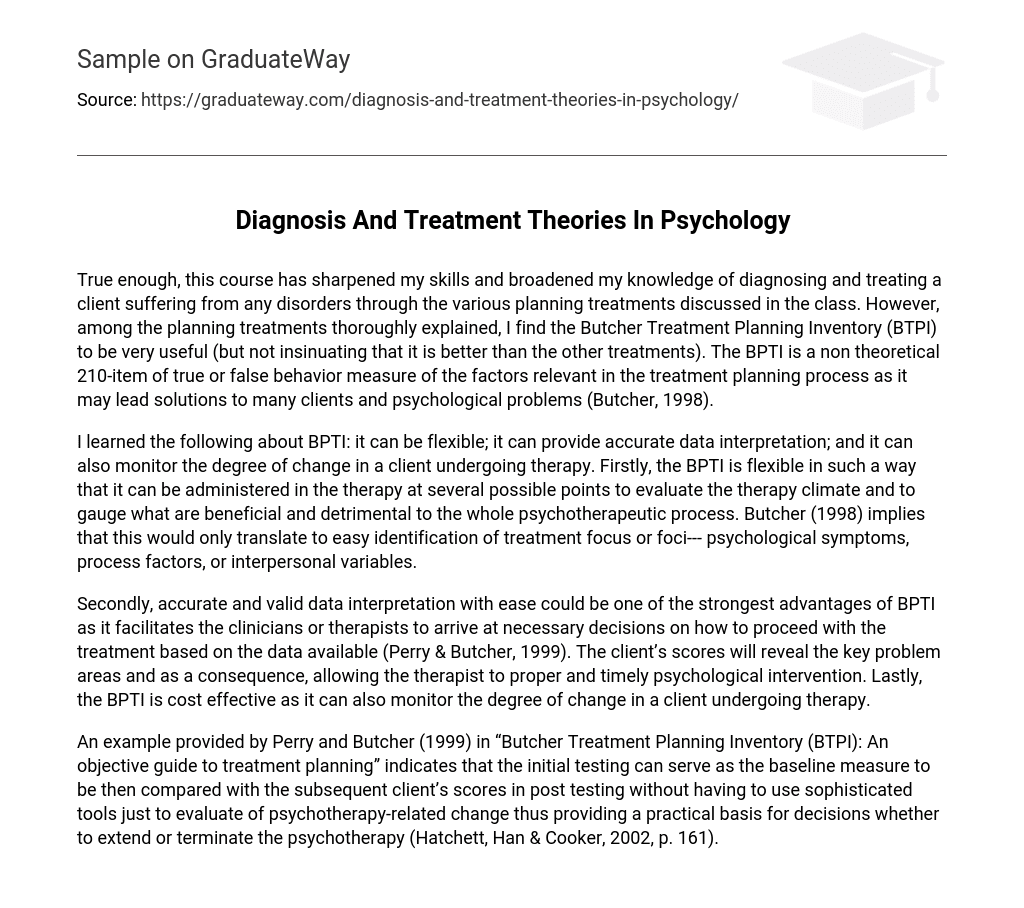True enough, this course has sharpened my skills and broadened my knowledge of diagnosing and treating a client suffering from any disorders through the various planning treatments discussed in the class. However, among the planning treatments thoroughly explained, I find the Butcher Treatment Planning Inventory (BTPI) to be very useful (but not insinuating that it is better than the other treatments). The BPTI is a non theoretical 210-item of true or false behavior measure of the factors relevant in the treatment planning process as it may lead solutions to many clients and psychological problems (Butcher, 1998).
I learned the following about BPTI: it can be flexible; it can provide accurate data interpretation; and it can also monitor the degree of change in a client undergoing therapy. Firstly, the BPTI is flexible in such a way that it can be administered in the therapy at several possible points to evaluate the therapy climate and to gauge what are beneficial and detrimental to the whole psychotherapeutic process. Butcher (1998) implies that this would only translate to easy identification of treatment focus or foci— psychological symptoms, process factors, or interpersonal variables.
Secondly, accurate and valid data interpretation with ease could be one of the strongest advantages of BPTI as it facilitates the clinicians or therapists to arrive at necessary decisions on how to proceed with the treatment based on the data available (Perry & Butcher, 1999). The client’s scores will reveal the key problem areas and as a consequence, allowing the therapist to proper and timely psychological intervention. Lastly, the BPTI is cost effective as it can also monitor the degree of change in a client undergoing therapy.
An example provided by Perry and Butcher (1999) in “Butcher Treatment Planning Inventory (BTPI): An objective guide to treatment planning” indicates that the initial testing can serve as the baseline measure to be then compared with the subsequent client’s scores in post testing without having to use sophisticated tools just to evaluate of psychotherapy-related change thus providing a practical basis for decisions whether to extend or terminate the psychotherapy (Hatchett, Han & Cooker, 2002, p. 161).





